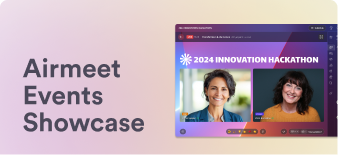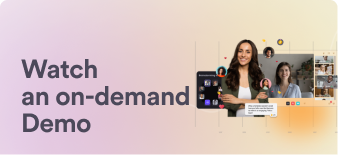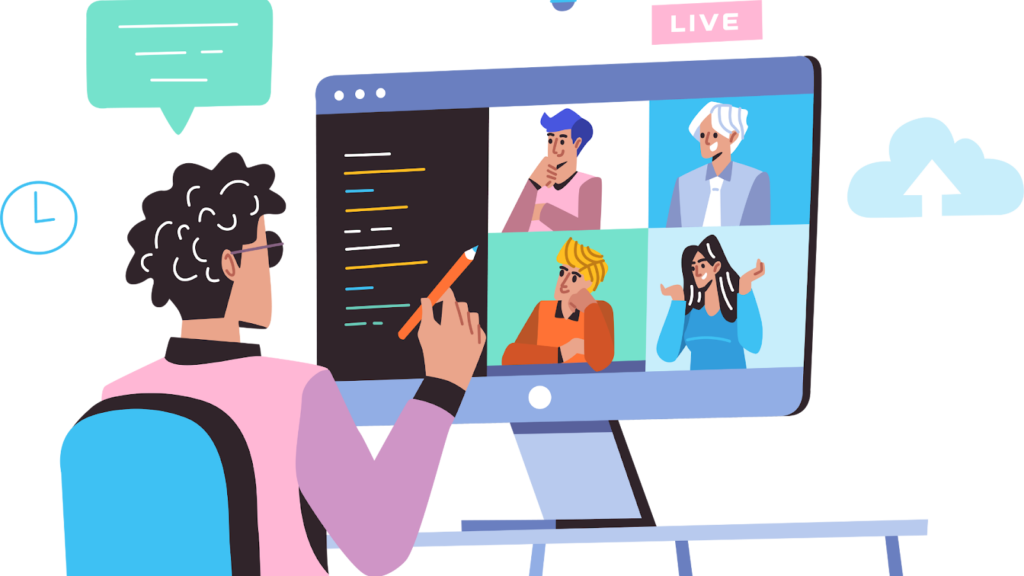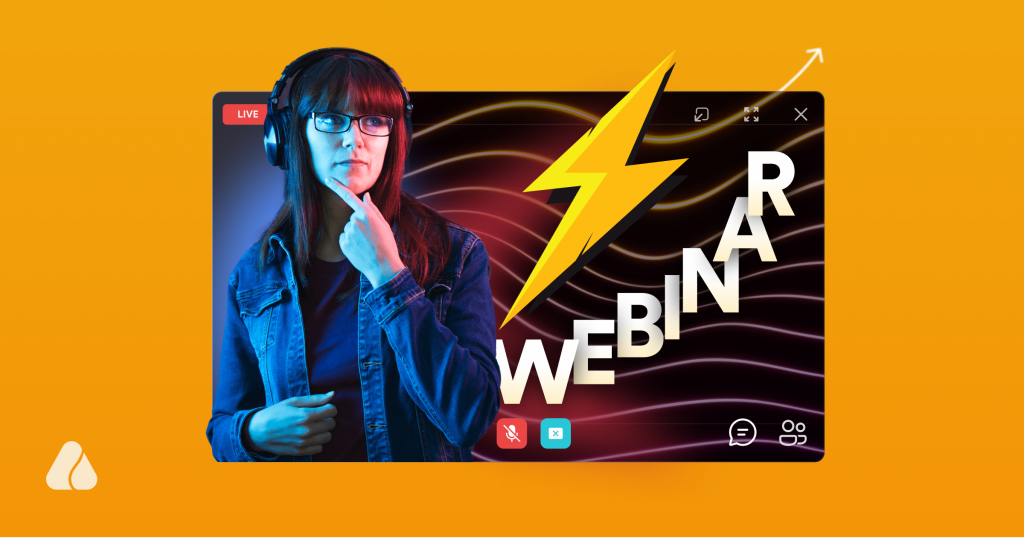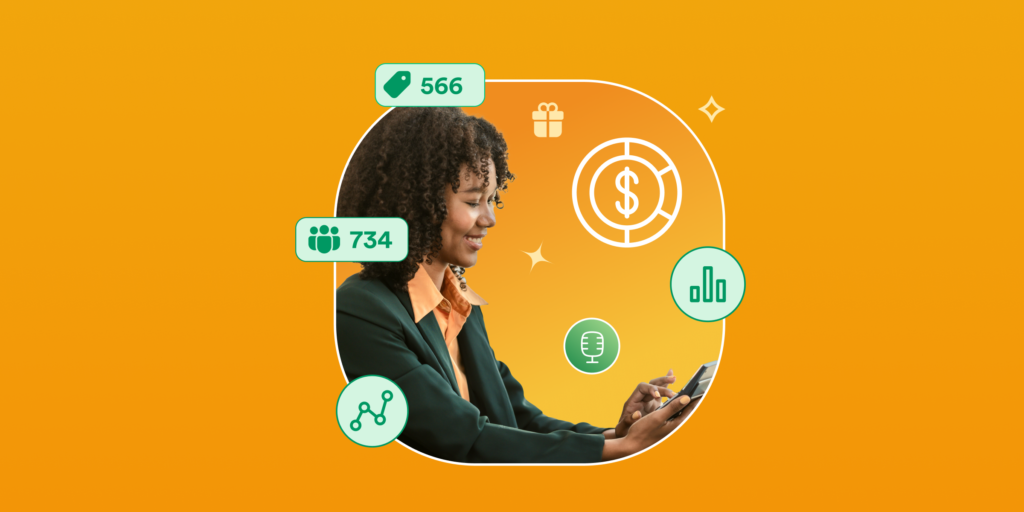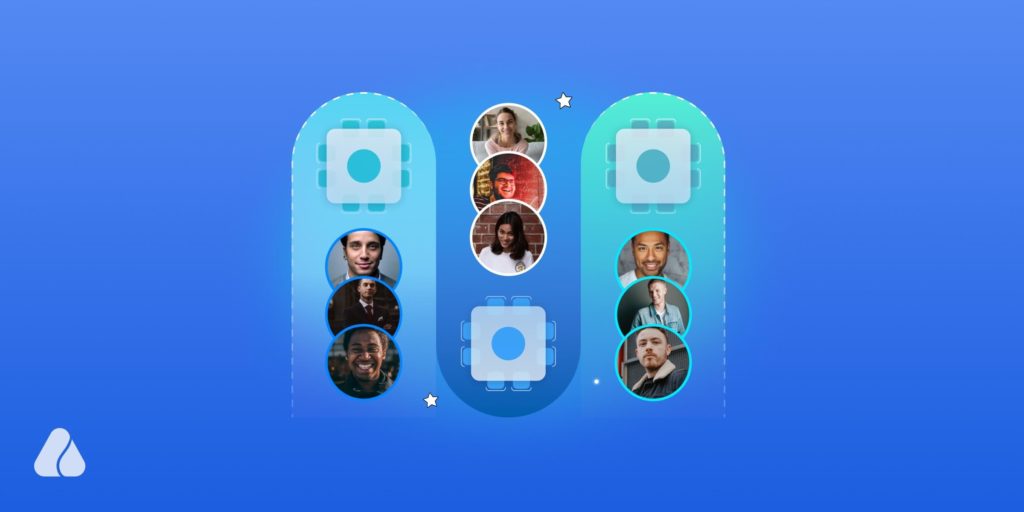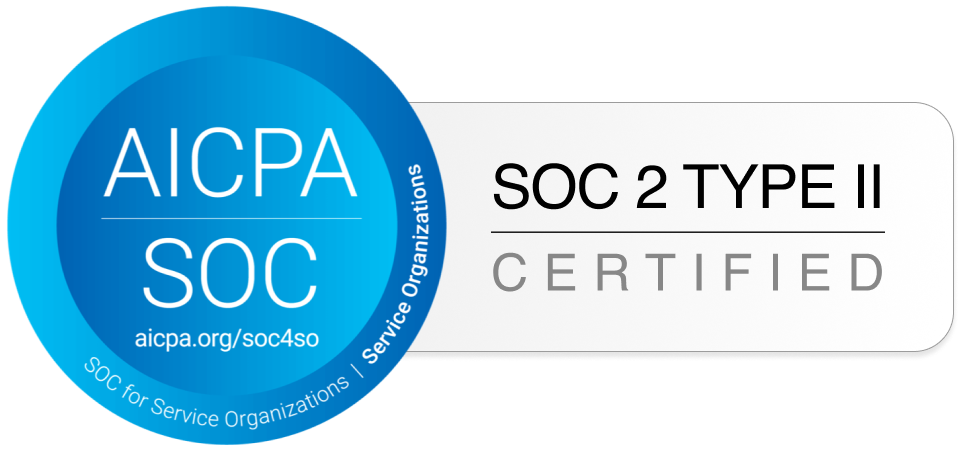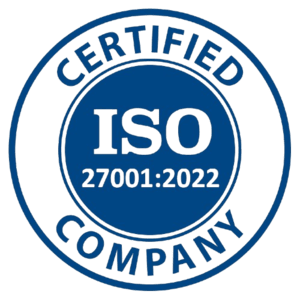From brand awareness campaigns to content repurposing, webinars support a wide range of initiatives. It has become a vital tool for marketers.
But an effective webinar content marketing strategy goes beyond the live event. Its true potential lies in maximizing impact by leveraging diverse marketing channels.
This guide covers everything marketers, especially event marketers need to know about how to leverage this virtual event format to maximize returns—from the basics of webinar content marketing to robust formats, techniques, and real-life examples.
Whether you’re just getting started or refining your approach, we’ve got you covered.
Let’s dive in!
What is Webinar Content Marketing

Webinar content marketing is widely recognized today as a powerful component of a business’s overall marketing strategy and initiatives. Companies around the world use webinars as a key tool for building brand authority, amplifying digital engagement, boosting lead generation, and more.
In fact, 93% of the marketers consider webinars as an essential part of their marketing efforts.
In simple terms, webinar content marketing typically involves leveraging webinars or digital seminars to support a company’s content marketing initiatives or broader marketing strategies to ultimately achieve specific business goals or targets.
Webinars offer marketers immense flexibility. This is also one of the primary reasons for their growing importance in modern-day marketing. They can be transformed and repurposed into diverse formats and valuable content pieces.
From product demos and educational sessions, to custom blogs and on-demand content generation, webinars can support your every content marketing effort.
Now, let’s explore the popular webinar content marketing formats you can implement to achieve your marketing goals.
15+ Unique Webinar Content Marketing Formats
Formats for Funnel Stages: From Demand Generation to Conversion
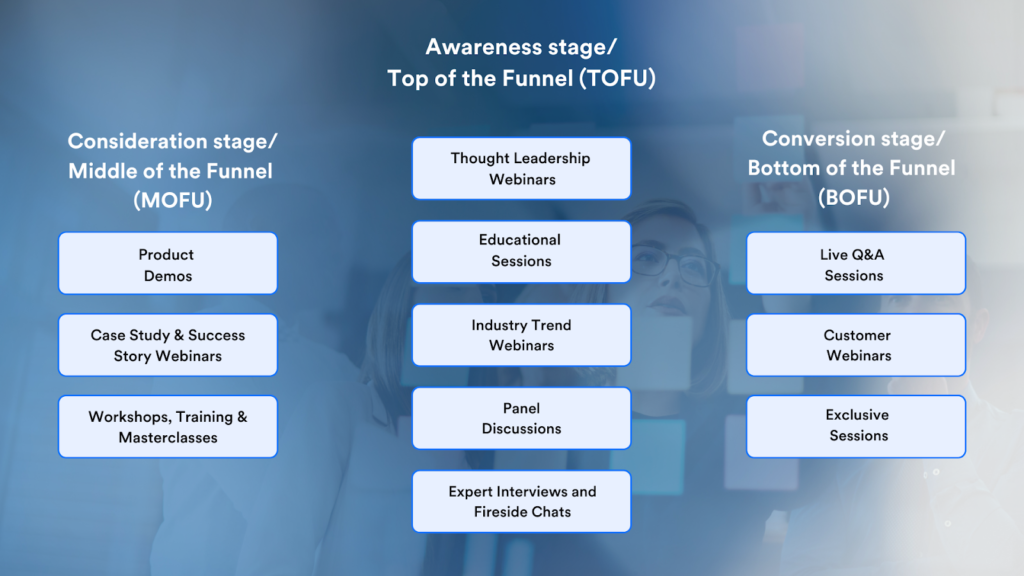
Awareness stage/Top of the Funnel (TOFU)
1. Thought Leadership Webinars: These webinars position your brand as a credible information source and industry leader. They support your marketing campaigns by spreading awareness, building trust, and attracting a broader audience.
2. Educational Sessions: Hosting educational webinars is one of the best ways to strengthen your brand position organically.
The key is to identify what exactly your target audience wants to learn and provide relevant, in-depth information. These sessions not only foster audience engagement but also help make a lasting impression.
3. Industry Trend Webinars: Keep your audience informed about the emerging industry trends, the latest technologies, and new research findings, and discuss future predictions with industry trend webinars.
These focused sessions significantly contribute to fostering a sense of anticipation and excitement among your audience.
4. Panel Discussions: Webinars in the form of panel discussions help broaden your audience reach. You can feature multiple industry leaders & influencers and renowned domain experts.
These sessions offer several benefits, like:
- It expands audience reach by attracting dedicated followers of panelists
- It enhances digital engagement and drives more leads
- It boosts your brand’s credibility & visibility
5. Expert Interviews and Fireside Chats: These sessions are usually hosted in a one-on-one interview format. Expert interviews & fireside chats offer a chance to have an informal, candid conversation with industry experts. The interview can be focused around different aspects of the speakers’ expertise, their personal and professional journey, learnings along the way, practical advice for audiences, etc.
This format helps establish an organic connection between your brand and the audience. By hosting such interviews and webinar series, you can also ensure consistent engagement and strengthen your brand’s visibility.
Consideration stage/Middle of the Funnel (MOFU)
6. Product Demos: Marketers host these webinars to showcase or introduce their products and services among their target customers. Product demonstrations help the audience understand the product’s functionality and benefits.
These live demos allow attendees to see the product in action, making it easier for them to visualize its value and utilization.
7. Case Study & Success Story Webinars: These webinars play an important role in influencing prospect’s decision-making. Case studies and success story-based webinars provide your audience with a direct insight into your business and offered services.
If your prospects see similar businesses achieving significant success with your offerings, they are more likely to make a decision in favour of your product or service.
8. Workshops, Training & Masterclasses: These webinars offer audiences and potential customers hands-on experiences.
With practical training sessions, workshops, and masterclasses, they gain deeper knowledge on the dedicated subject or product. These experiences ultimately influence the decision of prospects.
Conversion stage/Bottom of the Funnel (BOFU)
9. Live Q&A Sessions: Q&A sessions help resolve objections, clarify doubts, and accelerate the decision-making process. These webinars ensure real-time problem-solving opportunities and ensure immediate responses, increasing the chances of conversion.
Read: 7 Proven Strategies to Host an Effective, Engaging Q&A Session
10. Customer Webinars: You can host these webinars by featuring existing customers as leading speakers. Customer webinars are often a great way to influence high-intent prospect’s decisions.
You can have discussions around their product experience, customer support, and satisfaction level, to ensure the delivery of credible & authentic information.
11. Exclusive Sessions: Exclusive webinars can be crucial for high-intent leads or prospects who are very close to the decision-making process.
You can leverage these sessions to provide them a sense of exclusivity. Offer special discounts, personalized product recommendations, or VIP access to strategically push those prospects towards conversion.
Format Ideas for Continued Engagement & Marketing Campaigns
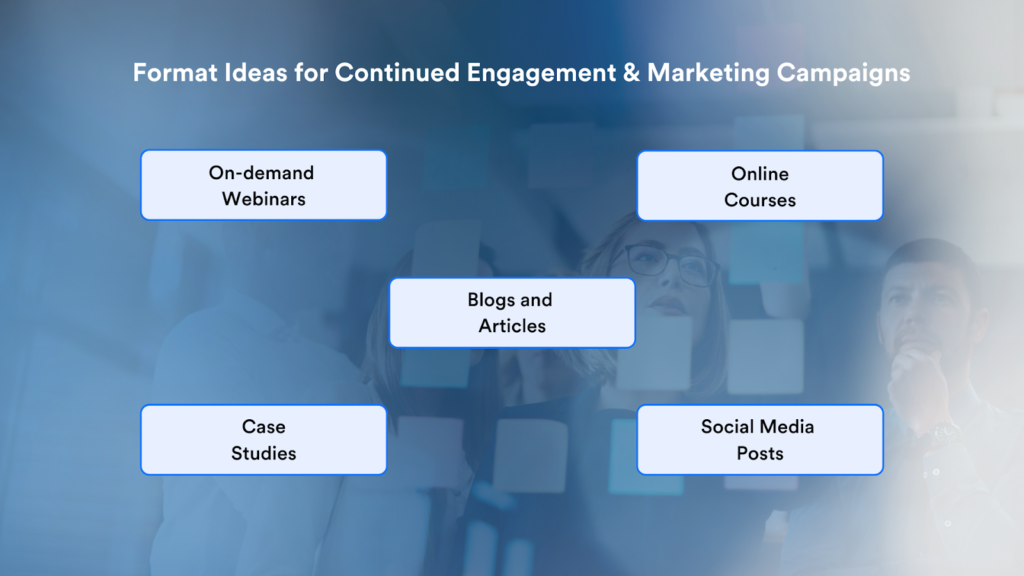
12. On-demand Webinars: An on-demand webinar is a recorded version of a live webinar that can be accessed anytime, anywhere. This format enables attendees to watch the session at their own pace even after the webinar has ended.
On-demand webinars can also be further tailored and segmented as per your marketing goals and objectives.
These webinars can be made more engaging by incorporating interactive elements like real-time polls and Q&As. Additionally, to ensure a more dynamic experience and elevate your content marketing efforts, you can also integrate AI agents and chatbots.
13. Online Courses: By combining multiple webinars and learning materials into a structured format, you can create online courses. These courses can be segmented to focus on a certain topic or domain.
You can leverage content generated from your webinar series, thought leadership sessions, and workshops for creating online courses.
14. Blogs and Articles: Repurpose your webinar content into custom blogs and articles. This format helps reinforce key insights and boosts SEO efforts.
For generating blogs from existing webinar material, you can include several targeted content pieces like summaries and key takeaways.
For example:
- “X” Key Takeaways from [Webinar Name]
- Expert Insights on [Main Subject] by [Speaker Name]
15. Case Studies: Transform your customer webinars into documented case studies. This content is extremely valuable in every stage of the sales cycle—nurturing, consideration, and conversion.
This webinar content format acts as tangible proof of how your product or service delivers value.
16. Social Media Posts: Repurpose the webinar content into bite-sized social media posts. You can include key highlights, speaker quotes, infographics, and short video snippets to make the posts informative and visually engaging.
You can also include CTAs in these social media posts to direct the readers to the webinar’s replay landing page or provide them with an on-demand video link. This will help sustain engagement and drive traffic to the content.
Read more: 22 New Ideas to Repurpose Webinar Content & Maximize ROI
Webinar Content Marketing Strategy: Tips, Techniques, and Tools for Effective Marketing
Must-Have Tools for Successful Marketing Campaigns
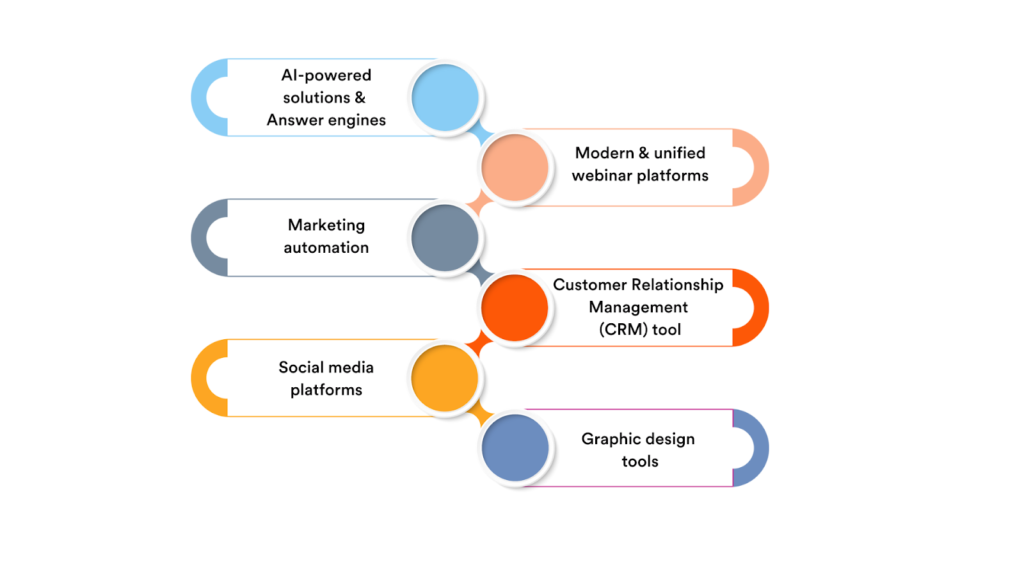
AI-powered solutions and Answer engines
AI-powered tools like ChatGPT and answer engines like Perplexity enhance the overall productivity and efficiency of the content generation process.
These tools provide webinar topic suggestions, offer personalized assistance, automate content creation, help analyze audience behavior & popular trends, and optimize engagement strategies.
Modern and unified webinar platforms
Modern and unified webinar platforms like Airmeet are essential for your webinar content marketing strategy in many ways.
These smart solutions are equipped with robust and advanced functionalities, such as AI-integrated tools, integrations, multilingual features, high-quality recording capabilities, and more.
Features like quality recording and AI-integrated tools are important for webinar content generation. It ensures good audio & visual and helps in generating session titles, descriptions, and more.
Marketing automation
Marketing automation tools like Marketo helps marketers automate their webinar content marketing initiatives, including
- Promotional campaigns
- Email marketing campaigns
- Follow-up and nurturing campaigns, and more.
Customer Relationship Management (CRM) tool
CRM tools are essential to centralize the important data. With tools like HubSpot, you can streamline the data flow, track attendee interactions, and segment audiences.
These valuable insights help you personalize live webinar experience & engagement strategies, tailor follow-up emails & messages, and more.
Social media platforms
Social media platforms like LinkedIn, Facebook, Instagram, and X (previously Twitter) are essential for a successful marketing campaign.
Whether you want to promote a webinar or share repurposed webinar content, these platforms are the ultimate channels. From spreading awareness to boosting engagement and improving traffic, you can leverage social media platforms for diverse initiatives.
Graphic design tools
Leverage tools like Canva to design visually compelling promotional materials, social media graphics, presentation slides, and personalized content marketing templates.
Graphic design tools help you create branded and engaging posts, videos, and more to support your marketing efforts.
5 Crucial Tips & Techniques to Maximize the Impact
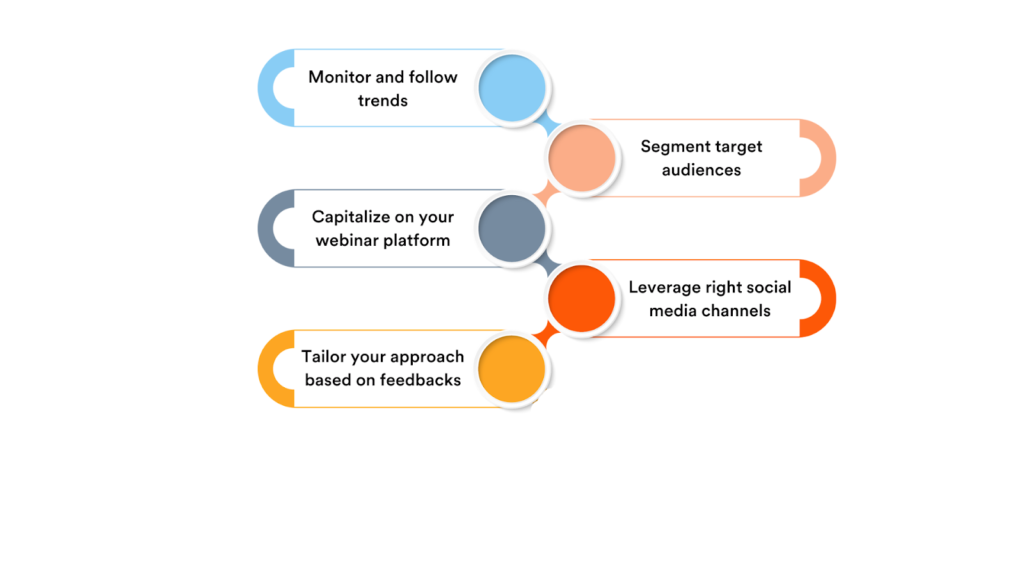
1. Monitor and follow trends
Stay updated on ongoing and upcoming industry trends and competitor activity. These trends can differ on the basis of target audience, product, webinar trend, and marketing strategy.
Make sure to follow every aspect that aligns with your business goals and marketing objectives. There are several ways to monitor and track the latest trends and competitor activity, such as:
- Go through your competitor’s webinar and content marketing strategies and identify the gaps & refine your approach.
- Monitor social media activities and conversations to assess the subject of interest among your target audience.
- Join online forums and relevant groups to stay up-to-date on any changes within your industry and its trends.
2. Segment target audiences
To maximize the impact of your webinar content marketing campaigns, segment your target audience.
You can do that on the basis of some key factors like interests, background, demographics, behavior, and engagement levels. This categorization enables you to create tailored strategies that resonate with each group.
Develop targeted email sequences and repurpose webinar content into personalized formats that align with segmented audience preferences.
You can also divide the webinar attendees based on low, medium, and high-intent leads. This empowers you to:
- Tailor your webinar content marketing strategies to suit each lead type
- Craft custom follow-up messages & nurture emails based on their engagement level
- Implement action items to guide high-intent leads towards conversion
3. Capitalize on your webinar platform
Leverage your webinar platform features and functionalities to strengthen your content marketing strategy from the beginning.
- Use interactive features like polls, chats & Q&As to gauge your attendees behavior. Monitor what attendees are discussing in the chat feed. It will help you identify the area of interest and pain points.
You can incorporate these insights into webinar content marketing campaigns to create relevant content that resonates directly with the attendees.
- Leverage the multilingual transcription and high-quality recording feature. Don’t forget to start recording the live webinar on time.
- Use this recording to provide instant replays
- Create personalized on-demand video and text-based content
- Craft targeted, bite-sized content for post-webinar efforts
4. Leverage the right social media channels
Promoting webinars on multiple social media platforms is important. But before doing so, make sure you identify the right ones. It is important to analyze on which platform your target audience is most active and can drive desired results.
Once you’ve selected the right social media channels for your campaigns,
- Create content & start publishing it one by one within a designated time frame. Avoid pushing too much content at once.
- Use proper hashtags and snippets.
- Share highlights, key takeaways, and speaker quotes.
5. Tailor your approach based on feedback
Planning your webinar content marketing strategy once is not enough. Consistently monitoring the performance of the campaigns to analyze their effectiveness is crucial.
Send feedback & surveys to your webinar attendees and registrants both. Craft custom questions, gather & assess responses, identify the gaps, and make improvements in your approach. These gaps can be as simple as inaccessible replay or as critical as lack of satisfaction with the content, speaker, or more.
This is why you should also take a moment to understand what audiences are seeking, even post-webinar.
To get a broader picture and more feedback, run social media polls & contests. You can include questions like,
- Have you attended [Webinar Name] on [Date]?
- How was your experience with [Webinar Name]?
- Which on-demand content format do you prefer?
Lastly, don’t forget to seek feedback from your team and other involved stakeholders.
- Schedule meetings and have detailed discussions on what went well and what could have been done better with this webinar content marketing campaign.
- List out the gaps and find possible solutions.
At the end, compare the insights, identify common problems, and start tailoring your approach to drive better results.
Real-life Examples of Webinar Content Marketing
In this section, we will explore some real-life examples of webinar content marketing to showcase its significance in corporate marketing and how brands have been leveraging webinars to drive consistent engagement.
Airmeet
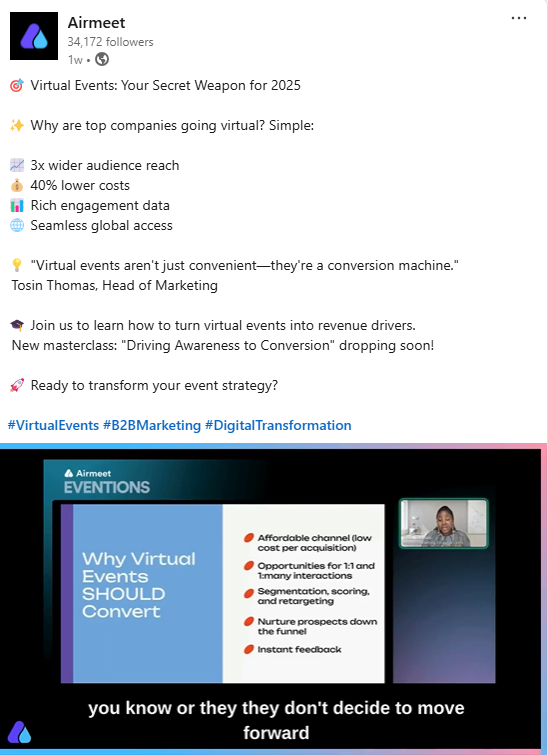
The above LinkedIn post by Airmeet here aligns with the “Awareness Stage (TOFU)” of a webinar content marketing strategy. It promotes masterclass as a part of the company’s awareness campaign.
It showcases the benefits of virtual events, such as wider audience reach, cost efficiency, and engagement insights. The post effectively captures the audience’s interest and builds curiosity.
Data Dynamics
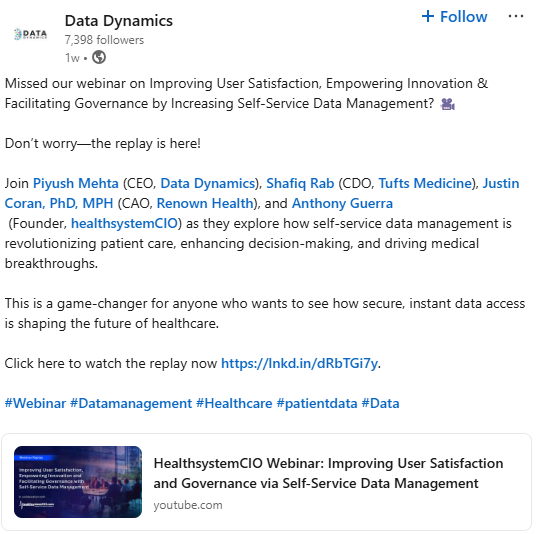
This social media post by Data Dynamics highlights a key stage of webinar content marketing—driving continued engagement through on-demand access. They’ve included a replay link, guiding their audience to revisit the session and explore insights shared by industry leaders.
SmartTRAK
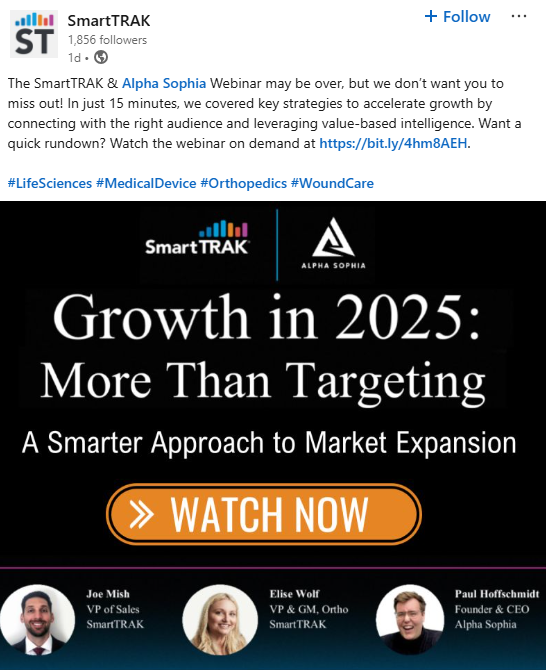
Here, SmartTRAK has repurposed the live webinar into a 15-minute on-demand session as part of their content marketing strategy.
By condensing key insights, they made it easier for their target audience to quickly grasp essential key takeaways, potentially increasing the engagement and viewership.
Frequently asked questions
A webinar content marketing template is a framework that generally outlines the key marketing campaigns where webinars and their repurposed forms serve as primary content assets.
Webinars offer several benefits, including:
- They are time-efficient and cost-effective content generation tools
- Widely accessible resource. They can be accessed anytime and anywhere
- Extends content life by generating hundreds of repurposed content pieces from webinar recordings and transcripts
- Support brand awareness, lead generation, and nurturing campaigns

